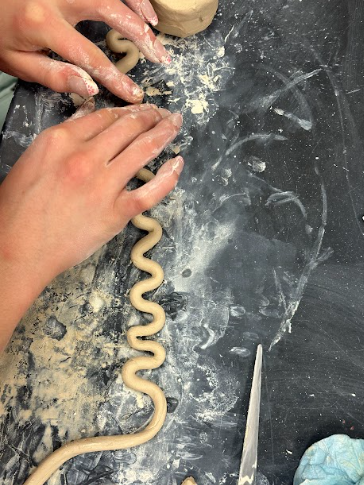CTQS Standard III
Teachers plan and deliver effective instruction and create an environment that facilitates learning for their students.
Element B:
Teachers use formal and informal methods to assess student learning, provide feedback, and use results to inform planning and instruction.
Collecting Data for Instruction
I create and use a summative assessment rubric to gather data and measure student learning outcomes. This rubric is designed to be as objective as possible within art. In assessing their work I am looking for the development of their ideas and how students implemented their ceramics skills to make them come to life. Students are graded based on the following 4 criteria.
Creativity / Planning
Artisanship
Skill
Writing
More often, I am informally assessing students skills and ideas through purposeful circulation and academic monitoring. I sit at every table while students are working to give them in the moment feedback. I also provide support in in progress critiques and with individualized meetings which give me a more clear connection to where the student may be confused.
Artifacts
Here is the standardized rubric students are familiarized with throughout the semester.
You will notice how the language is specific in responses to feedback given throughout the process of a project. This is where the purposeful circulation mentioned above comes into play.
However, sometimes the data collection is a lot messier and in the moment. In attendance questions I am able to record student understanding and enagement with what we are learning so I can see where to dive deeper and where we may need to pivot.
This data here is responses from a beginning block on where they see masks being worn and why.


